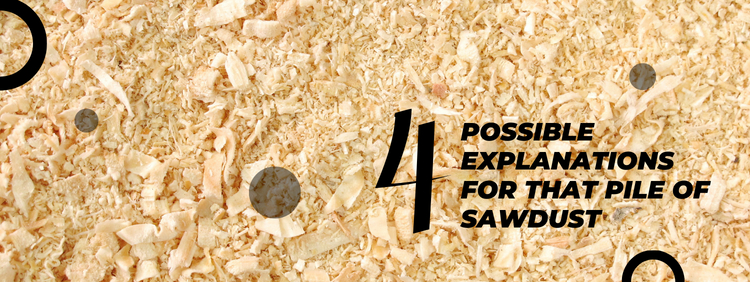 If you find a pile of sawdust under a cabinet or at the base of your wall, you may be confused. You haven't been building anything or sanding wood in your home. Then, you might realize what wood shavings could mean. Is it termites? Should you call residential pest control professionals immediately?
You may be dealing with a serious termite infestation. Or, it might be ants that cause similar sawdust piles around the home. Alternatively, the problem might not be bugs at all. Learn how to tell the difference between a pest invasion and a non-issue with our guide below.
If you find a pile of sawdust under a cabinet or at the base of your wall, you may be confused. You haven't been building anything or sanding wood in your home. Then, you might realize what wood shavings could mean. Is it termites? Should you call residential pest control professionals immediately?
You may be dealing with a serious termite infestation. Or, it might be ants that cause similar sawdust piles around the home. Alternatively, the problem might not be bugs at all. Learn how to tell the difference between a pest invasion and a non-issue with our guide below.
4 Possible Explanations for That Pile of Sawdust
If you've found sawdust piles in your home, take note of their location as well as the time of year. Then, use the information below to determine which of these pests (or humans) could be causing your worries.1. Termites
Termites are dreaded by homeowners all across the States and southern Canada. They're known for causing mass destruction when left unchecked. "Dry-wood" termites leave piles of what appears to be sawdust — but it's actually not sawdust at all. It's their feces. Termites don't leave piles of dust as they chew because they actually eat the wood they're destroying.
2. Carpenter Ants
Carpenter ants are medium-sized black ants that tunnel through old, rotting wood to build their nests and homes (don't worry, they're not the little black ants that appear in your kitchen after you've left the bottle of honey on the counter for too long). Unfortunately for you, parts of your home may look like perfect tunneling territory to these pests.
If you live in a moist area, or you've noticed piles of sawdust in a humid basement, carpenter ants are likely your problem here. Because these ants live in your walls, it's difficult to determine how much damage they've caused to your home. Call us for help diagnosing your carpenter ant problem and determining your next steps forward.
3. Carpenter Bees
Carpenter bees, like carpenter ants, drill through the wood to make homes for their young. Unlike termites, they don't eat wood. You won't find these bees in large groups as they tend to live by themselves — but they can be quite destructive to homes as their large holes weaken the structure of your residence over time.
These bees will not keep drilling and destroying (or creating tunnels) in the way ants do, but they can cause damage over time by weakening the structure and letting water into the wood. If you have an older home and you notice a lot of holes that look larger than what an ant could make, give us a call to determine whether your home has a carpenter bee problem.
4. You
Before you panic at the idea of tiny jaws chomping away inside your walls, think back to the last time you had construction performed on any part of your home. Did you bring in sandpaper to take the finish off a cabinet before re-staining it? Did you have new crown molding installed in your living room?
Sometimes, post-construction sawdust can look an awful lot like pest damage. If you're not sure — or if you definitely know you haven't commissioned any home improvement projects lately — be on the safe side and call residential pest control for help.

